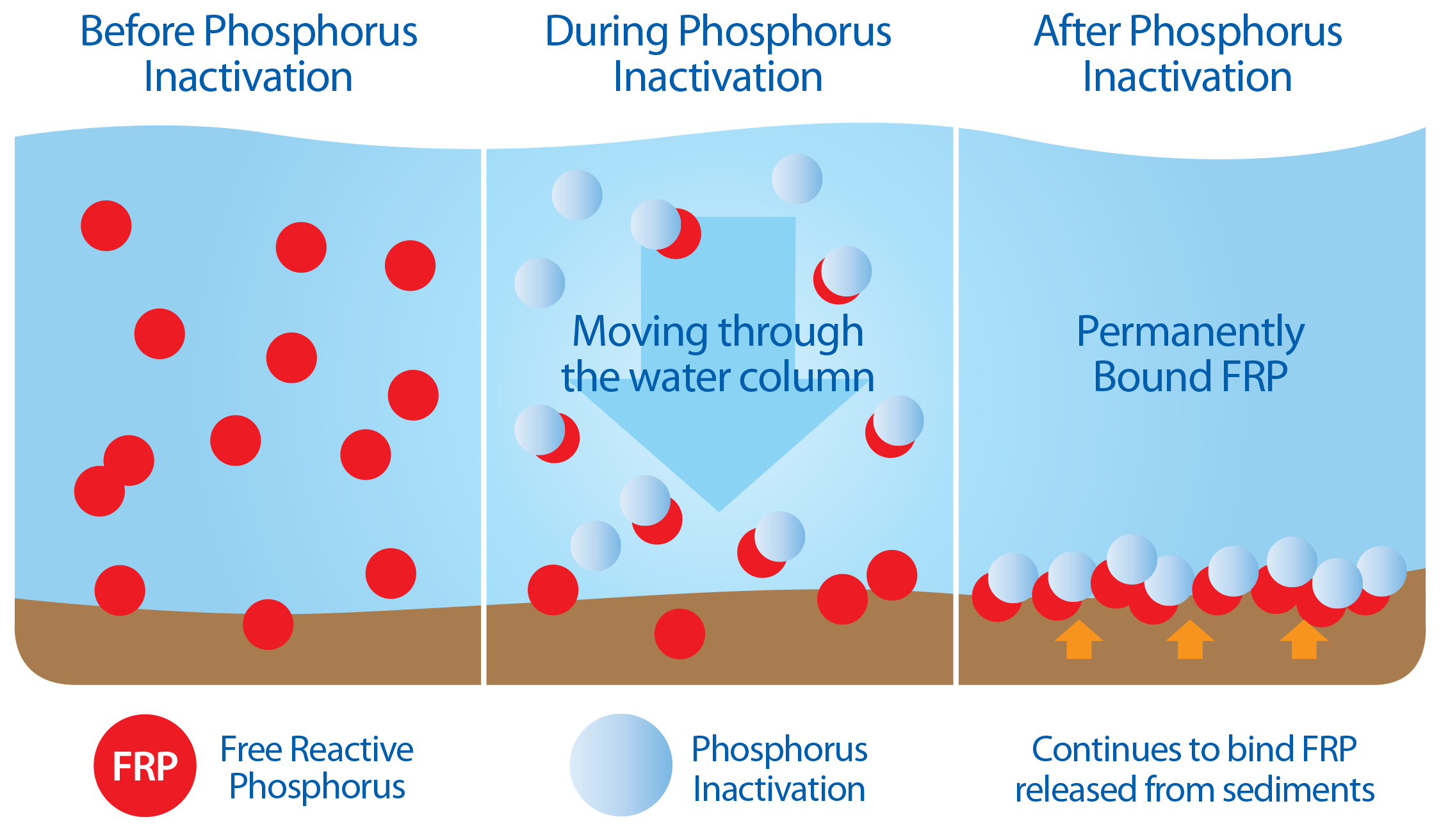Toxic Algae Removal
Phosphorus pollution is a problem that has been increasing throughout the United States for decades. As phosphorus levels in lakes increase, cyanobacteria or blue-green algae gain a competitive edge and can thrive. These species produce a number of toxins that threaten wildlife, domestic animals, pets, and human health. Recent examples of the problem these species pose are the shut down of the City of Toledo, Ohio potable water plant leaving over 400,000 residents without water they could drink in their homes. These are a few examples of why toxic algae removal is vital for our water.
Toxic algae removal helps keep lakes and reservoirs open
The general reaction when one of these Harmful Algae Blooms (HAB) occurs is to close the lake. Local health agencies will monitor for HAB and post signs directing lake users to avoid the lake. This can disrupt recreation, family vacations, events such as fishing derbies or rowing regattas, halt the use of the system as a potable water supply, and depress property values for those living on a closed water body.
A second reaction that can happen is communities embark on expensive consulting studies that can last years and consume funds that could have been spending to actually fix the problem. In many cases, we have seen the consulting component consume the funds and no remediation actually occurs.
The better alternative is to correct the problem. We have successfully restored lakes and reservoirs that have been impacted by closures. Our scientists using adaptive management can design and implement a program that corrects this through both reactive and preventative strategies.
When immediate action is necessary, we can obtain permits and perform treatments with US EPA registered algaecides to target and control these toxin producers. This can open the lake rapidly.
We begin by mapping the lake using hydro-acoustic technology to build a bathymetry map and calculate water volume. We perform temperature and dissolved oxygen profiles to determine which areas of the lake may be anoxic during the summer months leading to sediment phosphorus release. We collect water and sediment samples to determine the phosphorus load that needs to be targeted. We then build a treatment program to address this and implement it. Our team can normally do this work at a fraction of the cost of the consulting companies we compete with.
How is toxic algae removal done?
EutroSORB is our primary technology to capture and sequester phosphorus from the lake water column and lake sediments. This technology was developed by the Australian National Science Acadamy for the purpose of restoring HAB-impacted lakes and reservoirs. Our team brought this technology to the United State in 2010. It has been used worldwide for decades. Where appropriate we can also utilize the Alum application for this purpose. In some cases, a combination of these technologies is the best fit.
We are experts in the application of EutroSORB and other phosphorus sequestering technologies. We are equipped to and have treated lakes as large as 2700 surface acres.
We have solutions to capture incoming phosphorus as well. EutroSORB technology is available exclusively through certified users like ourselves. EutroSORB is a medium that is placed in inflow areas and captures free reactive phosphorus from the water that flows through the medium. The material comes in 25-pound bags and is replaced regularly when bonding sites fill.
Lastly, our toxic algae management programs practice adaptive management. We continue to monitor conditions in the lake and make adjustments to the treatment technologies as needed to capture future inputs.

